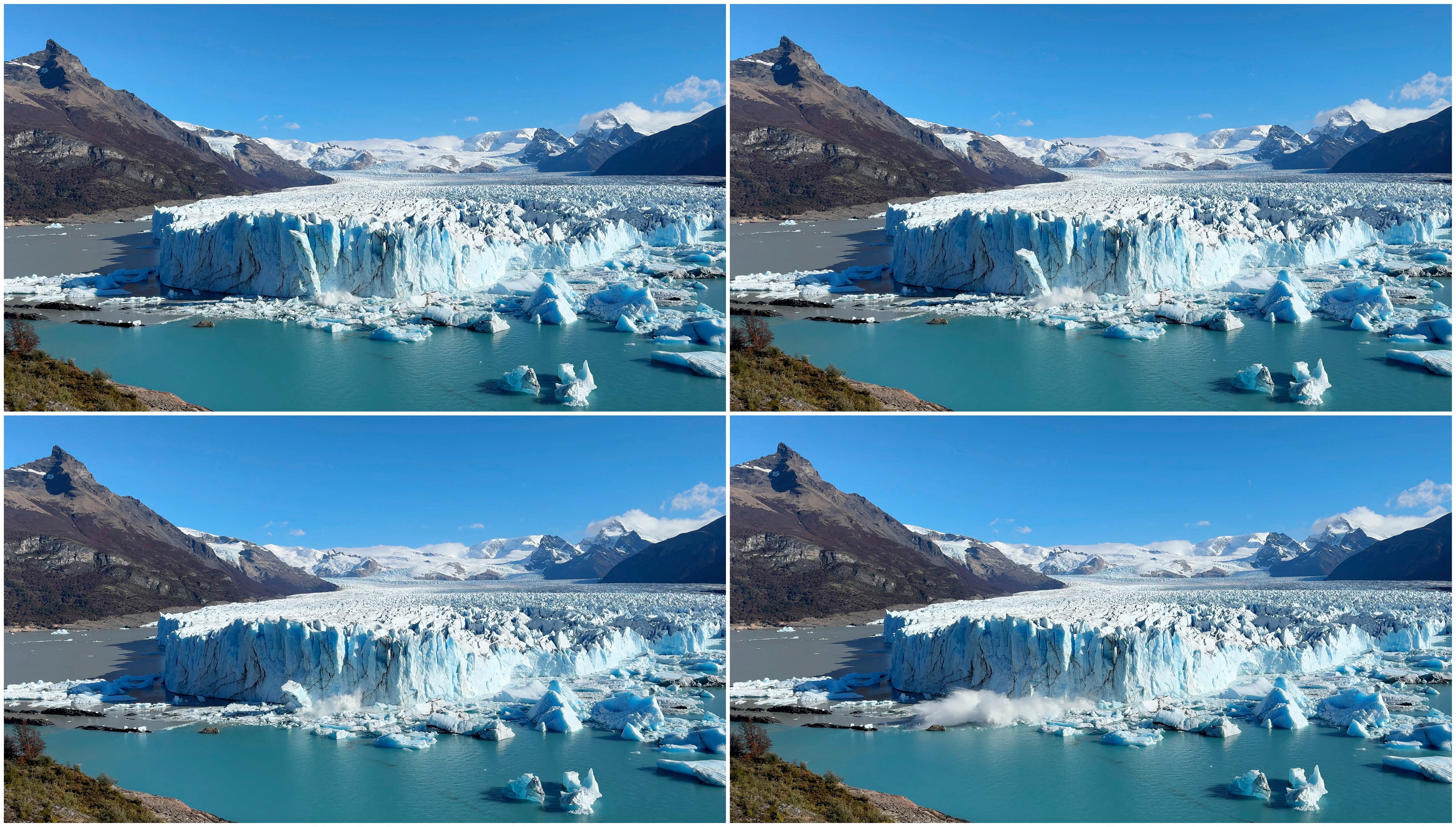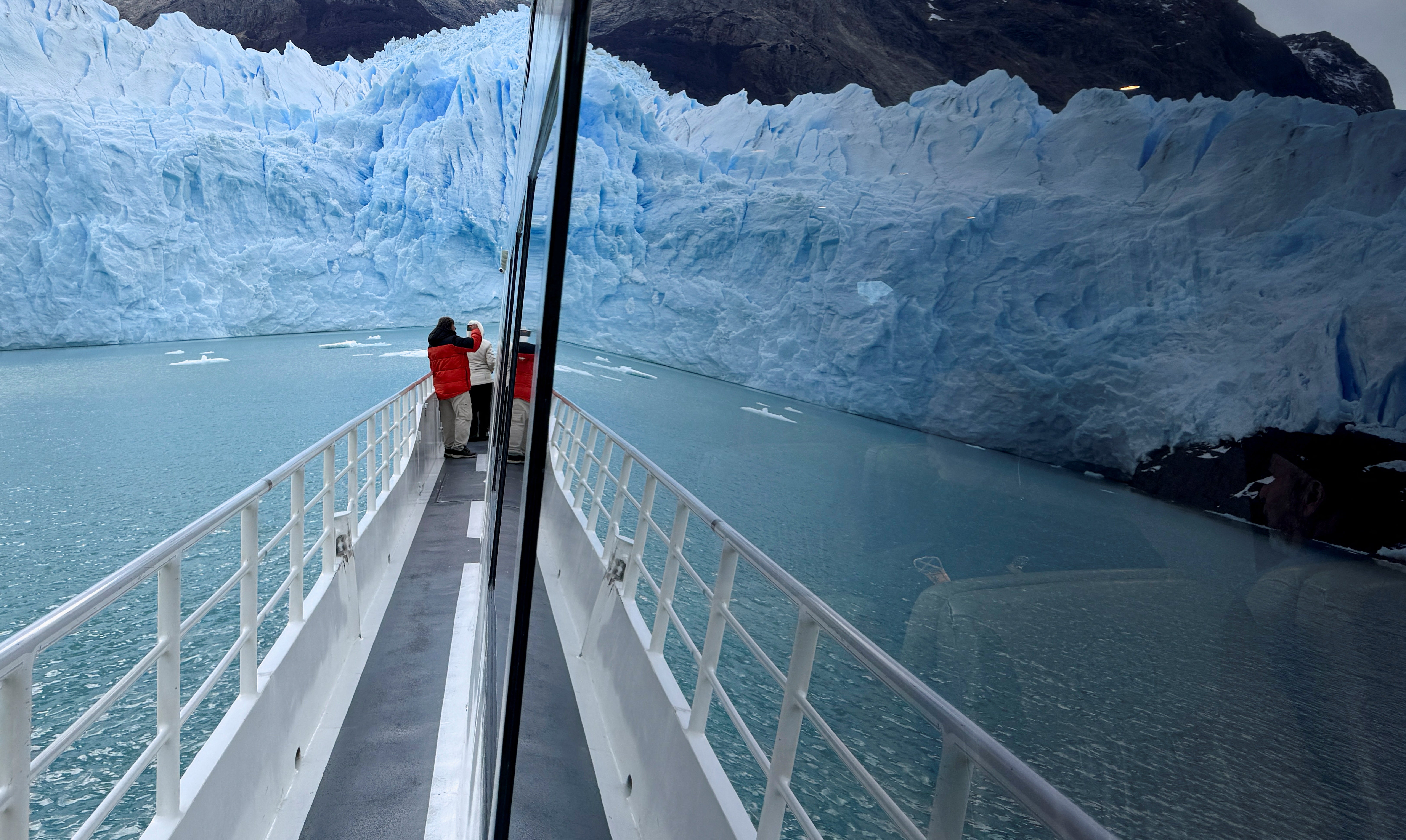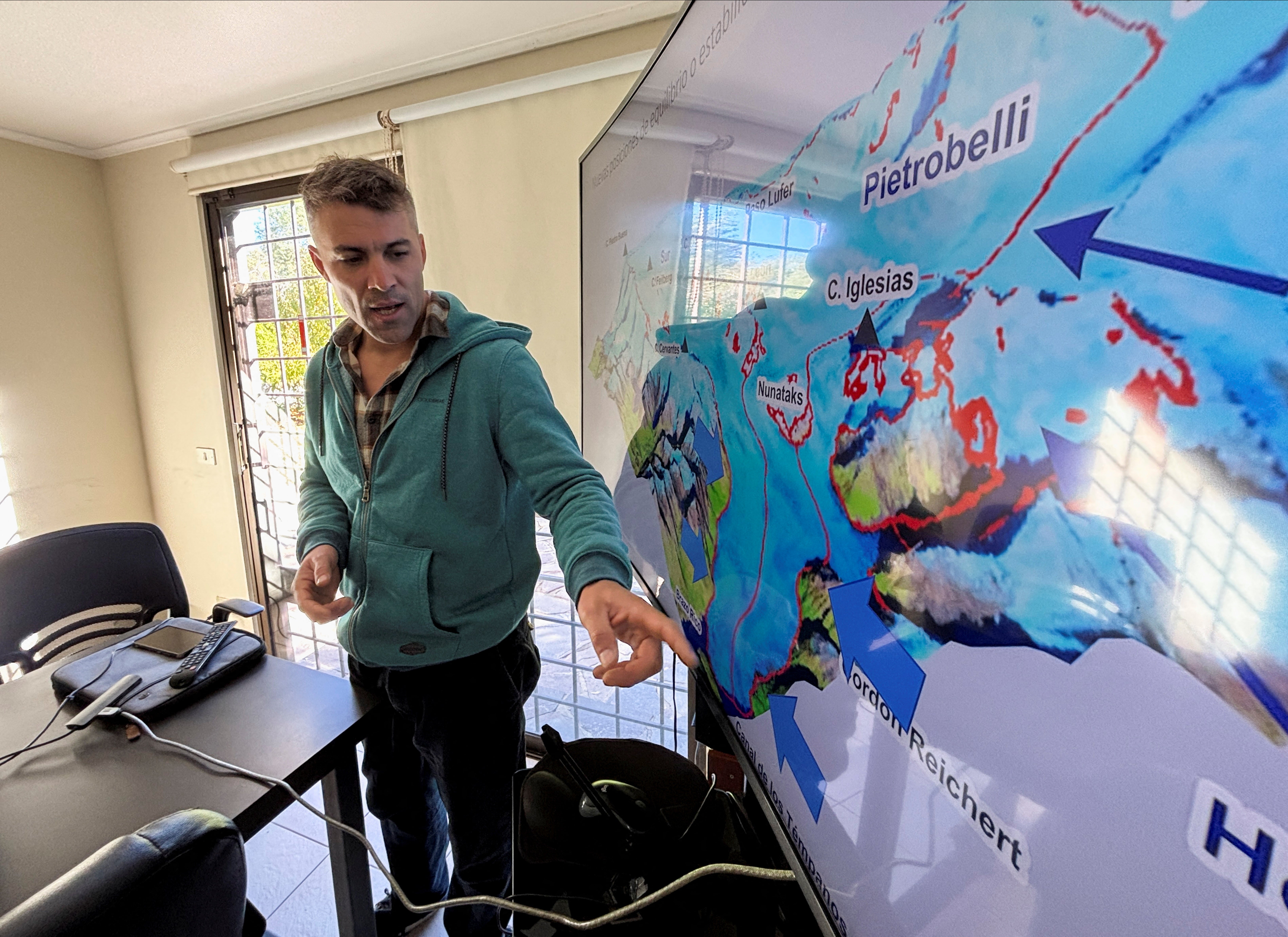ARTICLE AD BOX
The deep crack echoes through the Patagonian air, a prelude to the dramatic spectacle about to unfold.
Seconds later, a colossal block of ice, equivalent to a 20-story building, shears off the Perito Moreno glacier, plunging 70 meters into the turquoise water below.
This breathtaking scene has drawn visitors to Argentina's iconic glacier for years, where they stand on viewing platforms, anticipating the next thunderous calving event.
However, the sheer size of these recently breaking ice chunks is causing concern among local guides and glaciologists.
Perito Moreno has long defied the global trend of glacial retreat, maintaining its mass despite rising global temperatures.
Now, alarm bells are ringing.

"Ice calving events of this size haven't been very common at the Perito Moreno glacier over the past 20 years," said Pablo Quinteros, an official tourist guide at Los Glaciares National Park in the southern province of Santa Cruz.
"It's only in the last four to six years that we've started to see icebergs this big," he told Reuters during a visit in April.
The face of the glacier, which flows down from Andean peaks to end in the waters of Lake Argentina, had for decades held more or less steady, some years advancing and others retreating. But in the last five years, there's been a firmer retreat.
"It had been in more or less the same position for the past 80 years. And that's unusual," said Argentine glaciologist Lucas Ruiz with state science body CONICET, whose research focus is the future of Patagonian glaciers in the face of climate change.
"However, since 2020, signs of retreat have begun to be seen in some parts of the Perito Moreno glacier's face."

He said that the glacier could rebound as it has done before, but that for the moment it was losing between one and two meters of water equivalent per year.
If not reversed, that could lead to a situation where the loss accelerates.
A state-backed 2024 report, co-authored by Ruiz and presented to Argentina's Congress, showed that while Perito Moreno's mass has been overall stable for half a century, the period since 2015 has seen the fastest and most prolonged loss of mass in 47 years, on average losing 0.85 meters per year.
Glaciers around the globe are disappearing faster than ever, with the last three-year period seeing the largest glacial mass loss on record, according to a UNESCO report in March.
Ruiz said instruments his research team used to monitor the glacier had shown an increase in air temperature in the area of around 0.06 degrees Celsius per decade and precipitation decreasing, meaning less accumulation of snow and ice.

"The thing with Perito Moreno is that it took a while, so to speak, to feel the effects of climate change," Ruiz said. Now, however, the accumulation of ice at the top of the glacier was being outpaced by melting and calving at the bottom.
"The changes we are seeing today clearly show that this balance of forces... has been disrupted, and today the glacier is losing both in thickness and area."
For now, the glacier remains an awe-inspiring attraction for travelers, who board boats to see the calving and the huge icebergs floating around the lake up close.
"It's insane. The most incredible thing I've ever seen," said Brazilian tourist Giovanna Machado on the deck of one of the boats, which have to be careful of sudden ice falls.
"Even in photos, you just can't grasp the immensity of it, and it's perfect. It's amazing. I think everyone should come here at least once in their lifetime."









 English (US) ·
English (US) ·